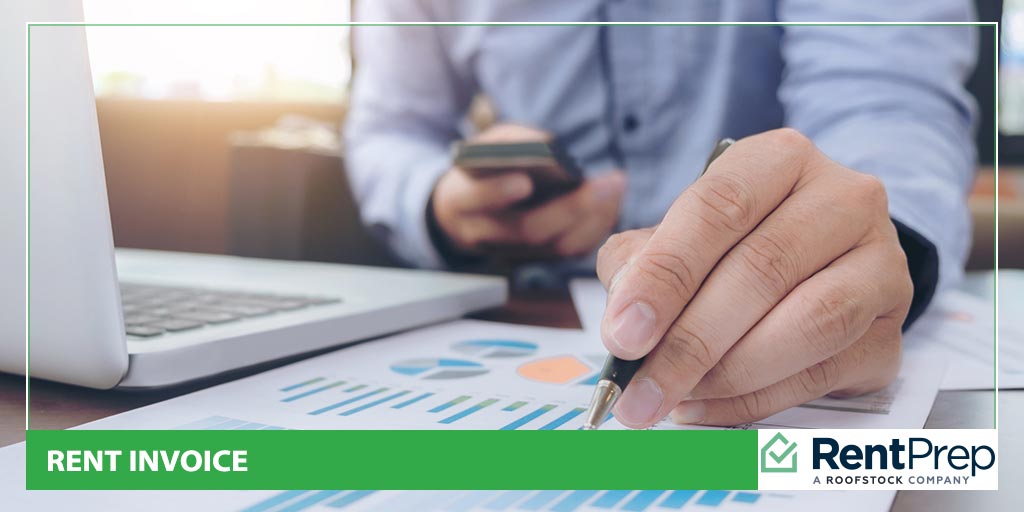
Depending on your specific experiences as a property manager or landlord, it’s possible that you’ve never dealt with a rental invoice before. Rent invoices, also known as rent bills, are sometimes given to tenants before or after they have paid rent as a means of organizing and recording the payments.
While a rental invoice is not always needed, there are a few situations when using this type of statement can ensure timely and accurate payments. Have you ever felt the frustration of collecting rent, electric, and water from your tenant in three separate payments? Do you wish this could be simpler?
Of course you do! Using a rent invoice and bill can help you to organize your business, and organization can always lead to a better bottom line.
Today, we’ll talk about what a rent invoice or bill is and how you can use our sample documents to your advantage.
A Table of Contents for the Rental Invoice Template
Rent Statements & Invoices
To landlords who are used to using these documents, it might be surprising that many landlords have never used them before. Rent statements and invoices are useful documents, but they aren’t always necessary depending on the types of properties that you are managing.
Rent statements are a type of document that lets the tenant know how much money they owe for rent and when it must be paid by. While these type of statements are most common in business rentals where there are variable month-to-month costs, they can also be used in residential rental settings.
A rent statement or invoice might include the following charges:
- Monthly rent
- Additional, applicable monthly fees
- Water share
- Electricity share
- Other utilities that the landlord pays for
The summary of all of these amounts is then given to the tenant to let them know how much they owe and when it must be paid by.
When to Use These Documents
There are a few different ways that rent statements and invoices are used. Let’s go through the two main scenarios that match with our templates to help you gain an understanding of how you can use these flexible documents to benefit your business.
Situation #1: Before Rent Is Paid
In this situation, you would fill out this rent statement with all of the applicable charges and then give the completed document to the tenant. Once the tenant receives the statement, they would be responsible for paying you the total amount due by the due date on the rental invoice.
Using the document in this way is great when you have a number of utilities that must be divided between different tenants. Rather than estimating the cost, you can let them know the exact utility cost and have them pay you once per month rather than multiple times.
This is also a great thing to do when your tenant has fees that they owe you such as late fees. You can add these fees into the statement so that the tenant can see the details of what they owe and why.
Situation #2: After Rent Is Paid
Some landlords use the rental invoice as a type of rent receipt. After you receive a rent payment, the details of when it was received and how much was received can be filled out on the rental invoice so that there is a paper trail.
Using the document in this way can be a little bit confusing at first, but the invoice can function in the same way as a standard receipt as long as you use it consistently.
How to Write a Rent Statement
Writing a rent bill can be confusing at first, but these documents are actually very simple once you break them down into their parts. We have put together two different sample types for the rent invoice example today.
This is our first sample:
| Rent Statement |
In this sample, there is space for you to detail the different charges that a tenant has incurred, how much they total, and when the total amount must be paid by. This rent invoice template is best for situations like Situation #1 above.
If you have a lot of smaller amounts that should be detailed to the tenant so that they know exactly what they owe for the month, this is the best template for you to use.
Our second rental invoice template looks like this:
| Sample Invoice |
This invoice is much more simple. It only includes the following information:
- Date
- Tenant name
- Rent amount due
- Rent due date
- Rental period
- Property address
- Landlord name
- Paid by
In many ways, this invoice resembles a receipt. And that’s because it is intended to be used as a type of invoice receipt! The document can be separated into two separate pieces, one for the tenant and one for your records.
This document is a great choice when the tenant has paid their rent, but you want to keep track of the payments with an invoice. If you have properties with only one set fee per month, this document makes more sense that the more extensive statement.
Organize the Details With a Rent Bill
Using a rent bill is a great way to organize your company’s incoming payments. It’s also a great way to let tenants know exactly what they owe you and why when you are managing properties that have variable fees for one reason or another.
Regardless of which template makes more sense for your rental properties, using documents like these rent bill templates will ensure that you have a clear record of what payments you should be receiving and why. And that record is essential for running a great business!

